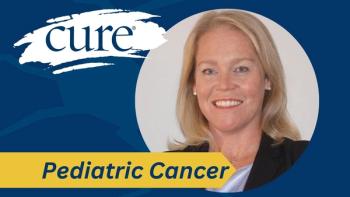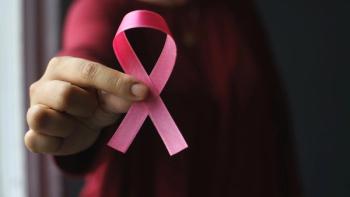
A recap of triple-negative breast cancer research from San Antonio
The best news from the 2012 San Antonio Breast Cancer Symposium is its emphasis on triple-negative breast cancer. There are so many papers presented on the subject that I can't keep up. Those of us who have been hanging around this dance for a long time--I was diagnosed in 2006--remember the frustration of seeing and hearing little about this disease from researchers and nothing from the media, who simply didn't appear to comprehend the complexity of breast cancer as a whole and were unaware that there was a type not fueled by estrogen or progesterone. And HER2? What's that?That is changing. More than 82 clinical trials are now looking for targeted treatments for TNBC. Because TNBC is defined by what it lacks--receptors for estrogen, progesterone and HER2/neu--it also lacks a targeted therapy. Researchers are busy finding a genetic signature of subsets of TNBC that will lead to those therapies.The San Antonio symposium this year had at least 20 papers looking at the genetics of TNBC, its response to chemo, and the potential for those targeted drugs, which no longer look as elusive as they had once been.The highlights of research presented on TNBC this year:Androgens
Some 75 percent of all breast cancers and 10 to 20 percent of triple negative cancers are positive for the androgen receptor. Several research studies have looked at the influence of androgen receptors on TNBC, which means new treatments plus a broader and deeper understanding of the disease. TNBC cancers that are also positive for androgen receptors are molecularly similar to prostate cancer and could potentially be treated similarly.AR-positive tumors responded well to bicalutamine and to 17-DMAG, a drug that has been recently in clinical trials, according to research presented by Jennifer Pietenpol, PhD, director of the Vanderbilt-Ingram Cancer Center. A phase 1 clinical trial at the University of Colorado has been studying the effectiveness of enzalutamide, a drug used to treat prostate cancer, on triple-negative. A phase 2 trial is planned at Colorado, Memorial Sloan-Kettering Cancer Center and the Karmanos Cancer Institute.A Heterogeneous Disease
It is increasingly clear that TNBC is not one disease, but a family of diseases, some of which are highly aggressive, and some that are not aggressive at all. We're getting increasingly closer to knowing which ones are which. "This heterogeniety highlights the need for personal medicine," said Justin M. Balko, PharmD, PhD, research faculty in the laboratory of Carlos Arteaga, MD, at the Vanderbilt-Ingram Cancer Center in Nashville, Tenn. Balko's research looked at how TNBC tumors changed genetically after neoadjuvant chemotherapy, and highlighted frequent mutations and amplifications, including the novel JAK2 genetic mutation, that can lead future research and the development of TNBC-specific drugs. The JAK2 gene has not been observed in previous research, Balko said. The patients in the study who had the JAK2 amplification tended to have a poor prognosis, which means that JAK2 may be a key to which cases of TNBC are aggressive and which aren't. Those with JAK2 expression may respond to inhibitors currently in clinical trials for inflammatory diseases, Balko said, which could be a game changer. In both Pietenpol and Balko's presentations, each TNBC tumor was unique, with different mixtures of similar mutations and amplifications. While TNBC tumors might share a tendency toward specific genetic mutations, the way those mutations play out differs from tumor to tumor, and may even change during treatment. Both studies showed a frequent mutation of the TP53 tumor suppressor in TNBC tumors.Response to Chemotherapy
Breast cancer might be biologically different in very young women versus older women, according to Sibylle Loibl, MD, PhD, associate professor at the University of Frankfurt in Germany. This may explain why younger women tend to respond better to neoadjuvant chemotherapy than older women, achieving a complete pathological response more often that older women. A pathological complete response is associated with a much better prognosis.And in a phase 3 multicenter study, women with metastatic TNBC had a more significant response to treatment with eribulin versus capecitabine, with a median overall survival of 14.4 months with eribulin compared with 9.4 months with capecitabine. The survival line for metastatic TNBC extended beyond six years.Most Women Survive
The great majority of women with local and regional recurrences survive after five years with proper treatment. Women with estrogen-negative breast cancer benefited the most if that treatment included chemotherapy after surgery, according to the Chemotherapy as Adjuvant for Locally Recurrent Breast Cancer (CALOR) trial. Researchers reported a 67 percent disease-free survival rate after five years for those who received chemotherapy versus 35 percent for those who did not, and a 79 percent overall survival rate after five years for those who received chemotherapy and 69 percent for those who did not. A big takeaway here is that local and regional recurrences--near the site of the original primary tumor and in the lymph nodes--are highly treatable.In the BEATRICE phase 3 trial, some 87 percent of TNBC patients with stages 1, 2 and 3 TNBC treated with current chemotherapy survived disease-free.Such positive results are becoming common for TNBC, said Kent Osborne, MD, director of the Dan L. Duncan Cancer and the Lester and Sue Smith Breast Center at Baylor College of Medicine in Houston, Texas. "We're seeing this across the board."Patricia Prijatel is the author of




